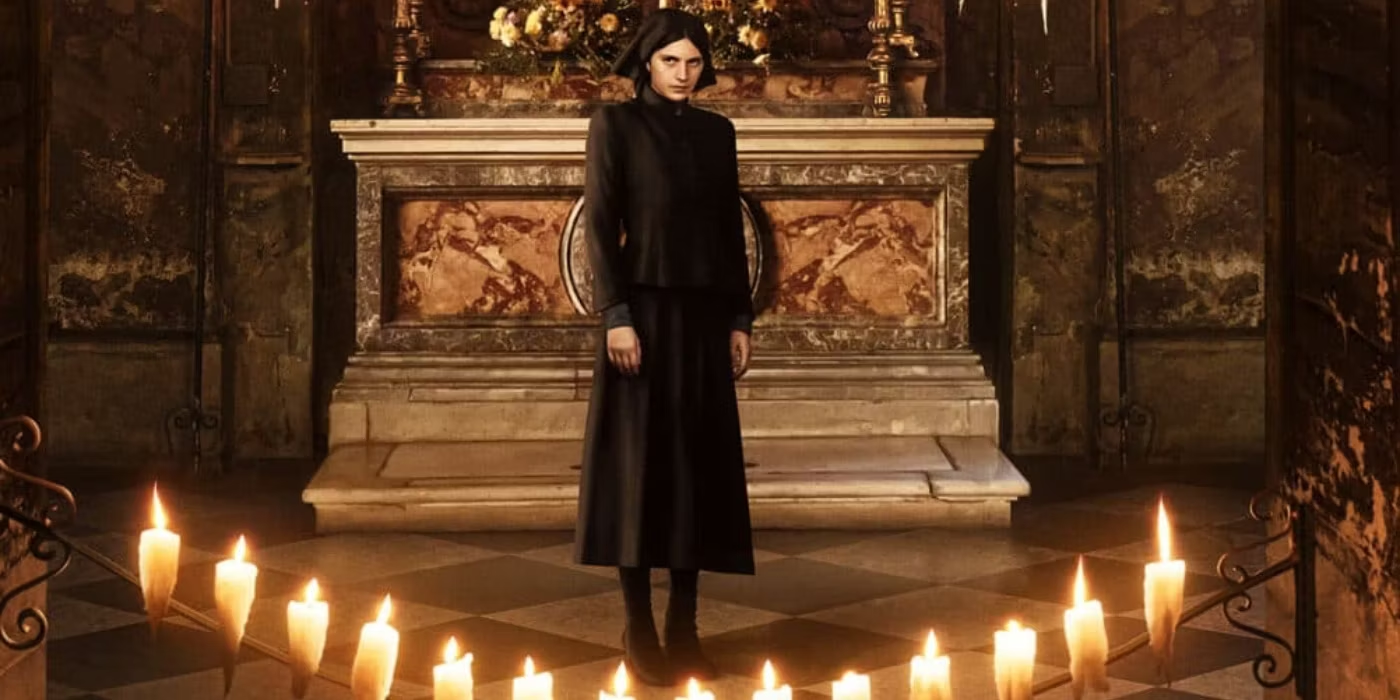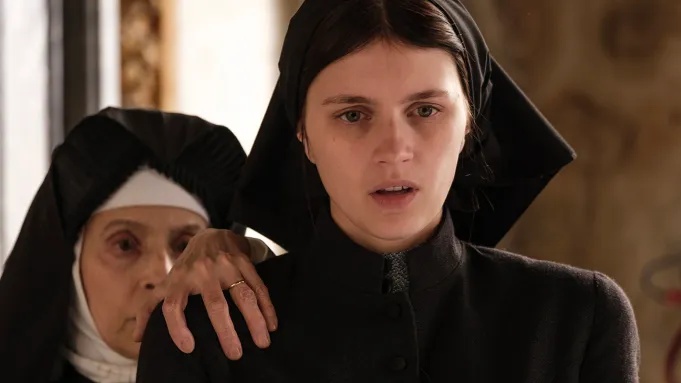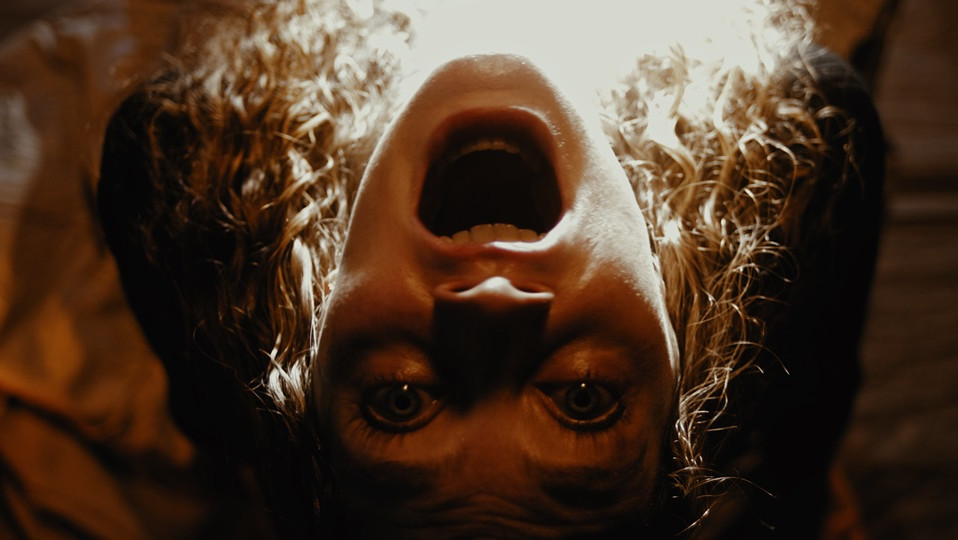‘The First Omen’ (2024) is a prequel to Richard Donner’s classic horror ‘The Omen’ (1976), showing the childhood of the antichrist Damien, who was raised by an American ambassador (Gregory Peck). In the competent new chapter in the decades-long franchise, a profane sect inside the Catholic Church plans to bring the hellspawn to give something to fear to those who are straying away from the faith in turbulent times so they will flock back to the Church. Arkasha Stevenson’s movie uses symbology to represent the moral struggles inside the secular religion, and the picture gains with skilled acting by Nell Tiger Free, Sônia Braga, Ralph Ineson, Charles Dance, Bill Nighy, and the Italian cast.
For a long time, there have been groups inside the Catholic Church opposing each other. The latest example happens today as Pope Francis has more amicable eyes on the LGBTQIA+ community, which has drawn ire from conservative sectors.
In its history, the Catholic Church has problematic passages such as the Holy Inquisition, its role in the Colonization and the Atlantic Slave Trade, and the paedophilic scandals shown in the picture ‘Spotlight’ (2015). On the other hand, it is also regarded for its charity work as giving voice to the Indigenous community in the Amazon that suffers from human rights violations, providing food and shelter to São Paulo’s homeless population and chemical-dependent population, and in the recent past with some relevant voices opposing the late 20th Century South-American dictatorships and its abuses which led to priests being tortured themselves amongst politicians and activists. For good and evil, the Catholic Church has a rich history with dogmas, iconographies, characters, clothing, rituals, and other aspects due to its century-old existence, and ‘The First Omen’ makes good use of it alongside the moral dilemmas.

‘The Omen’ questions Christian morality by presenting if the adoptive father would go as far as killing the satanic child on holy ground to prevent the rise of the incumbent apocalypse Damien would bring. The sequel ‘Damien – Omen II’ positions the same question to the new guardian, Damien’s uncle, who grows wary of the teenager. In the third chapter, ‘Omen III: The Final Conflict,’ Damien is a wealthy 33-year-old man, and finally a journalist who is also his former love interest delivers the killing blow. The fourth entry, a made-for-TV movie that is also the lowest point in the franchise, brings the daughter of Damien as the satanic antagonist and once more questions if the protagonist would slay a child to prevent the advent of doomsday.
Much of the Catholic thinking lies on guilt, and ‘thou shalt not kill’ is a moral imperative included in the Ten Commandments. Killing is already a problematic action due to its moral and emotional implications, which makes slaughtering a child an even more abhorrent act that movies and TV series, in general, avoid. If they have it in the storyline, it is primarily off-the-screen.
Enter Damien…
The series ‘Damien’ (2016) is a sequel to the original film, but it erases the other instalments. In this tale, the moral question rests on the shoulder of Damien himself, a good-hearted 30-year-old war photographer who starts to slip into his demonic urges and surrenders to his heritage after asking Satan to resurrect his girlfriend, who took a bullet for him. Thus, love leads Damien to accept his role as the herald of humanity’s downfall.
In ‘The First Omen,’ the moral question is more insidious. The protagonist, Margaret (Tiger Free), a young American novitiate, goes to Rome to work at an orphanage as requested by the Church.
The caring Cardinal Lawrence, her old mentor, and the stern Sister Silva (Sônia Braga), leader of the nuns, represent masculine and feminine archetypes, as well as the father and the mother images, inside the film and Church structures. But the moral issue goes more profound than the previous entries in the franchise because the place serves as an incubator of hellspawns, showing the lengths that a sect inside the Catholic Church would go to see it once again rising in a world succumbing to the questioning of values by counterculture and civil rights movements, including in 1970s Italy. Father Brennan (Ineson), the expelled member of the Church, represents those who are considered rogues for taking a stand against unethical practices inside powerful institutions. Nell Tiger Free surrenders her talent and prowess to become three separate entities, whether as a caring older sister to the children, a seductive succubus, or a tested survivor.
Braga gives another showcase of her world-class talent. This time, she shows her shops as a full-blown villain, which serves as a dark opposite to her portrayal of the Portuguese nun who had visions of the Holy Mary in the Christian movie ‘Fatima’ (2020). When viewed in retrospect, both characters serve as a metalanguage for complex positions and portrayals of the Catholic Church.
Novitiate Margaret and Sister Silva represent pious and motherly images of sacred women ingrained in the collective imagery. Although there have been in cinema previous Catholic priestesses who broke the vows, these two compose a disturbing image as the former gives in to lust. In contrast, the latter is not a caring mother as she favours the male descendants of Satan while being negligent and abusive towards the female ones, bringing more moral drama into the narrative.
The behaviour and organization of this group acting in favour of Satan inside the Church can be interpreted as a cult. When I interviewed screenwriter and author of When the World Didn’t End (2023) Guinevere Turner (Charlie Says), she stated that one of the common patterns of cults is “patriarchy on steroids and in the rare case when there is a woman in charge it is still power dynamics on steroids in which women and children usually suffer.” Although describing real-life cults, which Turner knows from personal experience and extensive research, the writer’s words mirror the dynamics seen in ‘The First Omen.’
With its unholy cult as antagonists, ‘The First Omen’ positions a bigger picture than going up against the antichrist by questioning how a small group of people without considerable means can go against a powerful institution while questioning their own morality and choices.
Also Read: The Greatest Horror Villain of Each Decade












